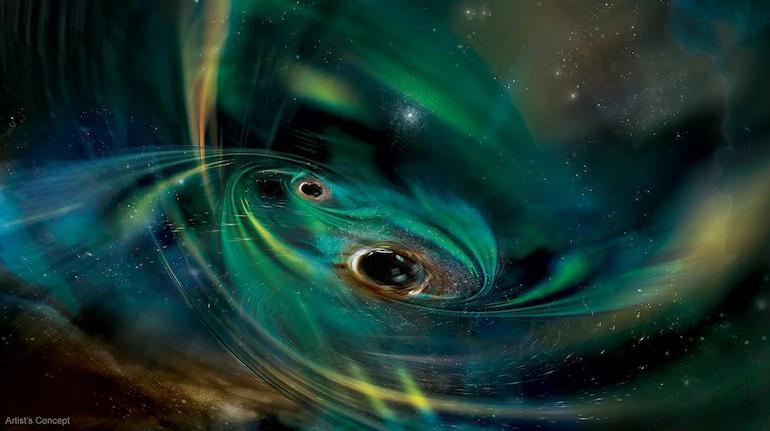
Researchers Detect Rare X-ray Flickers from Distant Black Hole
Deep in the vast expanse of space, a team of scientists has made a groundbreaking discovery, uncovering rare X-ray flickers emanating from a distant black hole. The extraordinary finding has shed new light on the behavior of these enigmatic objects, providing valuable insights into their complex dynamics.
The research team, led by the Indian Institute of Technology (IIT) Guwahati, the Indian Space Research Organisation (ISRO), and the Israeli Space Agency, employed India’s Astrosat observatory to detect the unusual X-ray pulses from the black hole GRS 1915+105. Located approximately 28,000 light-years away, this black hole is one of the most well-studied in the galaxy, offering scientists a unique opportunity to analyze its behavior.
The researchers observed alternating bright and dim phases lasting hundreds of seconds, with the black hole’s corona playing a crucial role in these fluctuations. During the bright phases, the corona shrank and heated, producing rapid 70-per-second flickers of X-rays. Conversely, when the corona cooled and expanded during the dim phases, the flickers disappeared.
“This is a rare and fascinating phenomenon,” said Dr. Pallavi agarwal, lead author of the study and a researcher at IIT Guwahati. “The alternating bright and dim phases provide a unique opportunity to study the black hole’s corona and its interaction with the surrounding environment.”
The detection of these X-ray flickers has significant implications for our understanding of black holes, particularly in the context of their accretion disks and coronae. Accretion disks are regions of swirling hot gas that surround black holes, while coronae are the hot, ionized gas that surrounds the accretion disk.
“By studying these X-ray flickers, we can gain insights into the complex interplay between the black hole’s accretion disk, corona, and the surrounding environment,” explained Dr. agarwal. “This can help us better understand the processes that govern the behavior of black holes and their role in the universe.”
The research team used Astrosat’s Soft X-ray Telescope (SXT) to observe the black hole’s X-ray emission over a period of several days. The SXT is designed to detect X-rays in the soft energy range, making it an ideal instrument for studying the behavior of black holes.
“This is a testament to the capabilities of Astrosat and the Indian space program,” said Dr. K. S. S. Rao, a researcher at ISRO and co-author of the study. “The SXT has proven to be an invaluable asset in understanding the behavior of black holes and other celestial objects.”
The detection of these rare X-ray flickers is a significant achievement, not only for the research team but also for the scientific community as a whole. The study provides valuable insights into the behavior of black holes, which are still not fully understood, and highlights the importance of continued research into these mysterious objects.
As we continue to explore the mysteries of the universe, discoveries like these remind us of the awe-inspiring complexity and beauty of the cosmos. The detection of these rare X-ray flickers from a distant black hole is a testament to human curiosity and our drive to understand the unknown.






